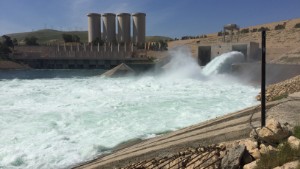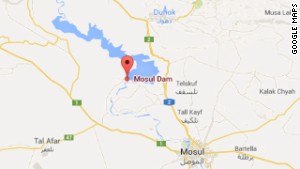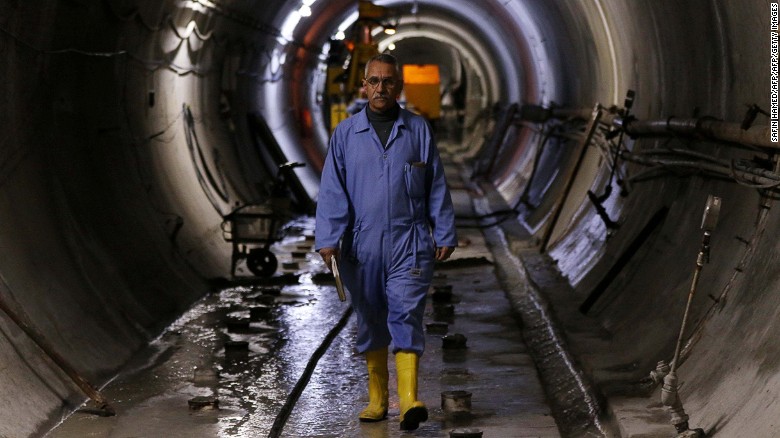Story highlights
- Mosul Dam was built in the mid-1980s on soft gypsum rock, which is constantly eroding
- U.S. experts warn the dam is at risk of "catastrophic failure." If it breaks, 1.5 million people could be at risk
- Workers pump about 2 tons of concrete into boreholes in the dam's foundations every day to shore it up
Mosul Dam, Iraq (CNN)Only
one of the two bottom outlet gates is functioning, angrily spitting out
water in a foamy white churn as birds fly above the spray.
This is the Mosul Dam, considered by some experts among the most dangerous of its kind in the world.
Completed
in the mid-1980s, the dam was considered a necessity at the time:
Turkey was building its own barrages further upstream, and the
government of then-President Saddam Hussein feared they could cause a
water shortage.
Almost 2 miles
(3.2 kilometers) long and 371 feet (113 meters) tall, it is Iraq's
largest hydroelectric dam, producing power for thousands of homes.
There's just one problem: It is built on soft gypsum rock, which is constantly eroding.
Underground repairs to mitigate the damage and keep its foundations intact are going on almost constantly.
Daily repairs needed
A
long, cool passageway leads into the underbelly of the dam, meeting up
with another wider, darker tunnel; the clanking of machinery
reverberates against the walls, and the air is thick with gasoline
fumes.
The machines are drilling
boreholes that will be filled with concrete -- a process called grouting
-- which needs to happen daily.
On
average, about 2 tons of concrete are pumped into the boreholes that
line this entire 1.4 mile (2.2 kilometer) stretch of the dam every
single day to solidify its foundations.
But
years of neglect brought on by a lack of funding, corruption and
bureaucracy have plagued efforts to refurbish the dam, and Iraq's
security problems have kept much-needed international companies -- and
their expertise and advanced technology -- away.
In
a recent security message, the U.S. government said if the dam
collapses, "Some models estimate that Mosul could be inundated by as
much as 70 feet (21 meters) of water within hours of the breach.
Downriver cities such as Tikrit, Samarra, and Baghdad could be inundated
with smaller, but still significant levels of flooding within 24-72
hours of the breach."
The lives of at least 1.5 million people could be at risk, according to U.S. estimates.


 https://www.blogger.com/blogger.g?blogID=2537564821836124792#editor/target=post;postID=1625435698289588985
https://www.blogger.com/blogger.g?blogID=2537564821836124792#editor/target=post;postID=1625435698289588985

No comments:
Post a Comment